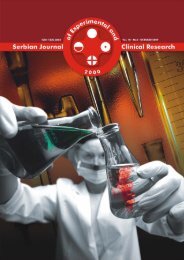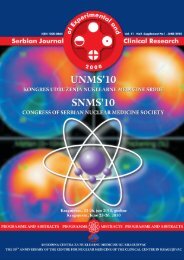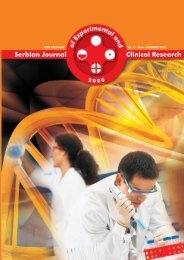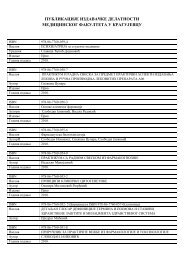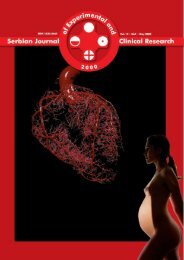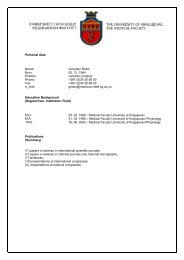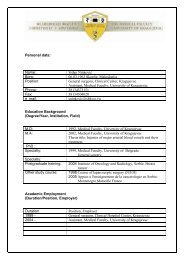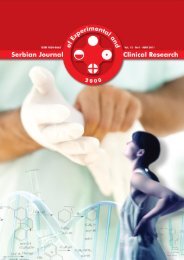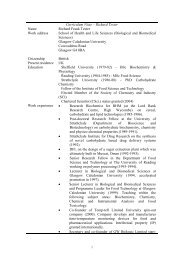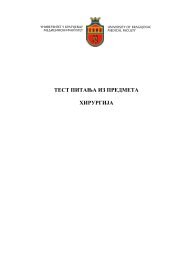Untitled - Medicinski fakultet Kragujevac - Univerzitet u Kragujevcu
Untitled - Medicinski fakultet Kragujevac - Univerzitet u Kragujevcu
Untitled - Medicinski fakultet Kragujevac - Univerzitet u Kragujevcu
Create successful ePaper yourself
Turn your PDF publications into a flip-book with our unique Google optimized e-Paper software.
44<br />
INTRODUCTION<br />
A pressure ulcer (PU) is defined as a localised area of<br />
cellular necrosis and vascular destruction created as a result<br />
of prolonged exposure to pressure, shearing or friction<br />
(1). Pressure ulcers occur at a high incidence in spinal cord<br />
injury (SCI) patients (2). The epidemiology of PU varies<br />
considerably in patients with SCI by clinical setting, with<br />
incidence rates ranging from 0.4 to 38% in acute care, 2.2<br />
to 23.9% in long-term care, and 0 to 17% in home care<br />
(3,4). The annual incidence and prevalence rates of PUs<br />
range from 20 to 31% and 10.2 to 30%, respectively (4).<br />
Yarkony and Heinemann reported a prevalence of 8% during<br />
initial rehabilitation, 9% during the 2-year follow-up after<br />
rehabilitation, and 32% 20 years after rehabilitation (5).<br />
In a previous study, over two hundred risk factors for the<br />
development of pressure ulcers were described. The most<br />
important factors are inactivity, incontinence, neurological<br />
level of injury, completeness of injury, autonomic dysreflexia,<br />
secondary complications, such as spasticity, and nutritional,<br />
physical and socioeconomic status (5,6). Secondary<br />
conditions, such as smoking, age and some conditions<br />
or diseases, such as gastrointestinal, cardiopulmonary and<br />
renal diseases, diabetes mellitus, reduced cognitive abilities,<br />
malnutrition, anaemia, hypoalbuminaemia (



